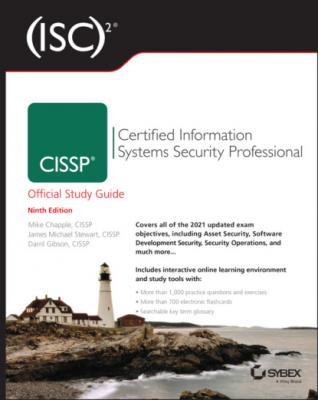ТОП просматриваемых книг сайта:
(ISC)2 CISSP Certified Information Systems Security Professional Official Study Guide. Mike Chapple
Читать онлайн.Название (ISC)2 CISSP Certified Information Systems Security Professional Official Study Guide
Год выпуска 0
isbn 9781119786245
Автор произведения Mike Chapple
Жанр Зарубежная компьютерная литература
Издательство John Wiley & Sons Limited

